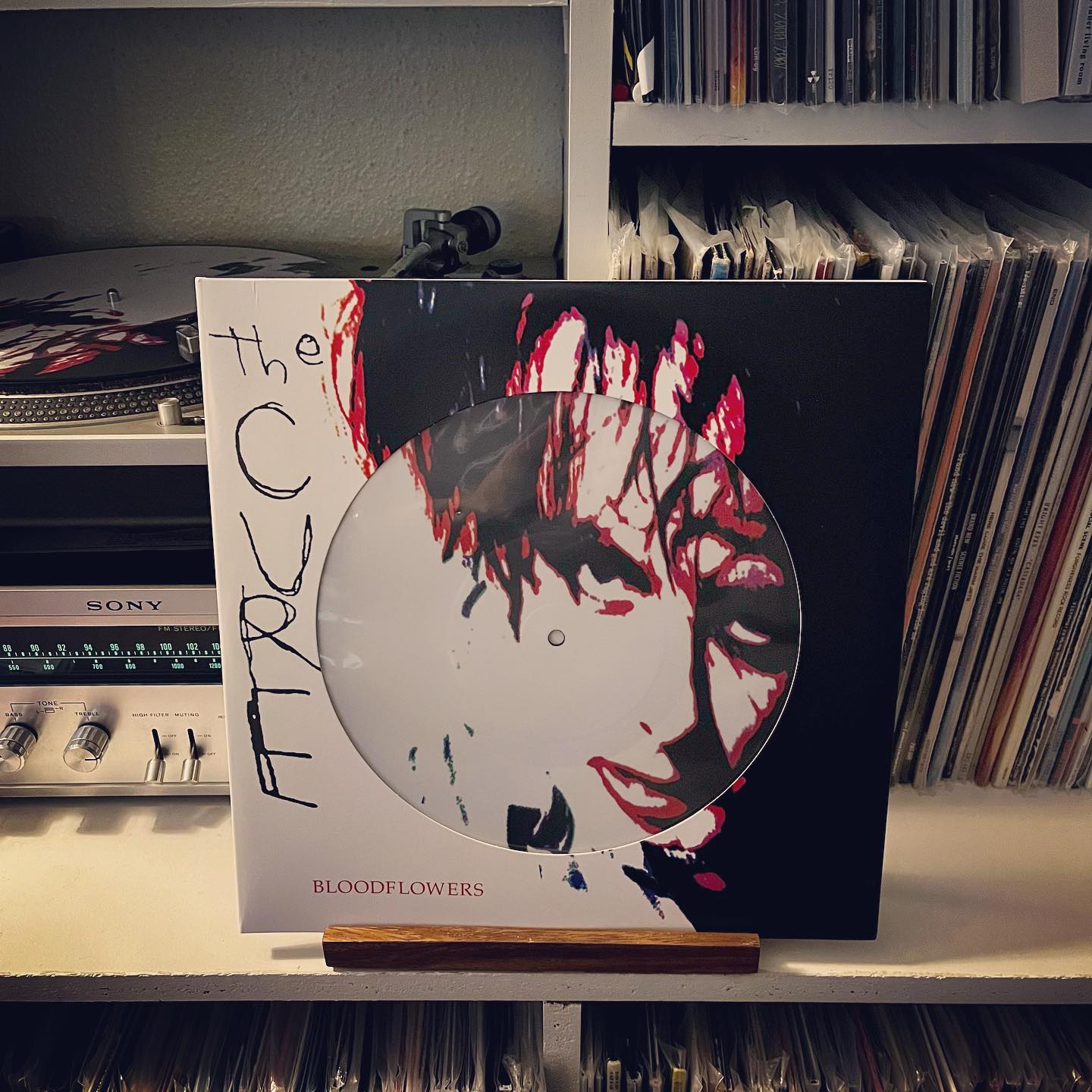
Let me start by explaining that my recent Cure obsession isn’t totally aimless: my podcast cohost and I decided to take an episode to do a deep dive through the legendary Goths’ discography—a daunting task for anyone, but especially for someone who had largely ignored their legacy for most of their life (namely, me).
While I’d already spent a decent amount of time with some of their most celebrated releases, I set off to familiarize myself with everything I was unfamiliar with. I’ve spent the last couple weeks binging their albums, reading Wikipedia and album reviews like I was cramming for college finals, and filling in the gaps in my Cure collection.
One thing that I learned during this time is that usually, the general consensus about each Cure album is mostly trustworthy. If an album is good, everyone says it’s good. If it’s bad, everyone says it’s bad.
But there is one blindingly glaring exception to that rule: 2000s Bloodflowers, a brilliant and understated record that is almost universally maligned. And while I’ll admit that its artwork does it no favors, this is one case where the collective music historian consciousness is very mistaken.
Its reputation is almost universally negative. Pitchfork even uses it as a shorthand as an example of a classic band making an unlistenable album. So when I went to listen to it, fresh off of the frustratingly uneven Wild Mood Swings, I expected an even more laborious slog. When the first few tracks were gorgeous and enjoyable, I kept expecting the album to turn.
It never did.
Instead, it offered an hour of glistening, melancholically serene, and occasionally passionately cathartic alt-rock that mirrored many of their best moments. In conversations with (primarily younger) Cure fans, I’ve found that many of them share the opinion that this album is criminally underrated.
When you’re a band like the Cure, especially after a run like they had from Head on the Door to Wish, everything you release is constantly compared to your existing body of work. For Bloodflowers, it seems the vitriol sent its way was due to the fact that it dares to position itself next to their opus Disintegration, as definitive a record as any artist has ever created. Ahead of the release, Smith said that Bloodflowers was the third part of a trilogy that also included that record and Pornography. I’ve said that Disintegration feels more sonically similar to Faith than the record after it, and in the same way, Bloodflowers feels almost more like a reflection of the more bittersweet moments on Wish. On tracks like “Out of This World” and “The Last Day of Summer,” acoustic guitars shimmer against cascades of synthesizers like on “A Letter to Elise” or “Doing the Unstuck.” On rockers like “39” and vinyl-exclusive track “Coming Up,” fiery electric guitars burst through wah pedals like on “Open” or “Cut” (or even “The Kiss,” but that’s a different album). There are also a few moments of R&B and hip-hop influence, like on Wild Mood Swings, but they’re used much more tastefully here compared to the awkward hamfistedness of that record. Some of the more bombastic tracks also forecast the more overt alt-rock of their brilliant 2004 self-titled record.
But the Cure’s sonic brilliance has always lived or died on Robert Smith’s lyricism, and believe it or not, he is in rare form here. “Where the Birds Always Sing” is an insightful look at mankind’s feeble attempts to understand the universe, singing “the world is neither just nor unjust/it’s just us trying to feel like there’s some sense in it.” “There Is No If…” paints a picture of two instances of telling his lover he loves her where she doesn’t quite respond the way he might have hoped. The eleven-minute arena rocker “Watching Me Fall” is a stunning spiral through angst that Smith does better than anyone (see also: “Disintegration”).
Let’s be clear on one thing though: even “bad” Cure records are around 7/10 minimum. At their worst, they’re still better at what they do than probably 95% of the acts putting albums into the world. Even Wild Mood Swings, which I’ve maligned throughout this review, has five or six really good songs on it, but it remains one of the weakest releases in their discography. But Bloodflowers is not a bad Cure record. Not by any stretch. I’ve returned to it several times over the last two weeks to make sure that I didn’t just waste my money on this, trying to make sure that I truly enjoyed it and wasn’t just surprised that it was better than I thought. And with each listen, I love it more. In fact, I might even put it above Pornography—though that’s a tight race.
I do wonder how much better it would have been received with better artwork though…
Pingback: Record #910: The Cure - The Cure (2004) - A Year of Vinyl